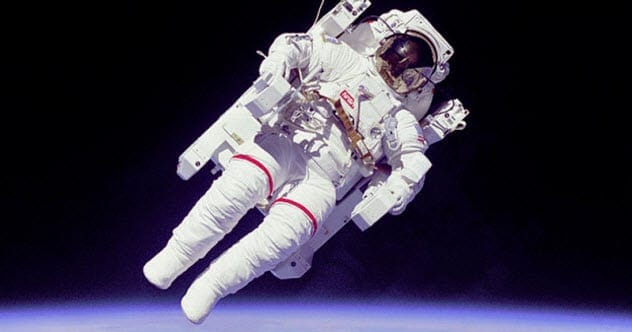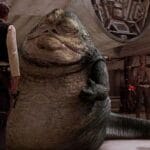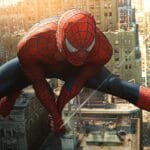Ever since Georges Méliès took us on A Trip to the Moon in 1902, filmmakers have been captivated by the vastness of space. Crafting tales among the stars presents unique challenges, whether it’s dreaming up inventive sci-fi concepts or striving for a realistic portrayal of astronaut life. Ready to peek behind the curtain? Let’s uncover some stellar secrets from the making of iconic space movies, spanning biographical dramas to heart-pounding sci-fi horrors.
10. Real Danger on the Set of The Right Stuff
The Right Stuff (1983), adapted from Tom Wolfe’s 1979 book, chronicles the journey of the test pilots at the dawn of America’s space program. This was an exceedingly perilous job, with some pilots tragically losing their lives. This palpable danger unfortunately spilled over into the movie’s production. Production designer Geoffrey Kirkland described it as “the single most dangerous filming environment I’ve ever been in.”
Tragically, stuntman Joseph Svec died performing the stunt where Chuck Yeager ejects from his NF-104A airplane after it spins out of control. During the filming of the drop, Svec’s parachute failed to open, and he was killed upon impact. While the exact cause remains unknown, it’s believed Svec might have lost consciousness from inhaling smoke used for the crash simulation, preventing him from deploying his chute. Director Philip Kaufman stated, “I didn’t use any of those shots. We were all stunned. It was so connected with the theme of the movie, how dangerous all of this stuff was.”
9. Making a Profit from the Corn in Interstellar
In Interstellar (2014), humanity looks to the stars for new homes after a blight decimates most crops on Earth, leaving corn as the sole viable food source. Director Christopher Nolan, rather than relying on CGI, chose to plant 500 acres of real corn for the Cooper family farm. He consulted Zack Snyder, who had grown about 200 acres of corn for Man of Steel (2013), about the feasibility of growing the crop.
Nolan invested $100,000 to plant the corn in Calgary, a gamble given the location. He desired a mountain view in the background, despite warnings that corn rarely thrives in mountainous regions. However, the risk paid off handsomely. Nolan’s corn grew so well that it was sold after filming concluded: “In the end, we got a pretty good crop, and we actually made money on this.”
8. Prescribed Method Acting in Sunshine
Danny Boyle’s Sunshine (2007) is set in 2057, 16 months into a mission to reignite the dying Sun. This means the crew members are already intimately familiar with each other when the story begins. To foster a genuine bond among the actors, Boyle had them live together in student accommodation for two weeks before filming. He believed “they made a group alliance together and that held for the rest of the film.” Hiroyuki Sanada (Kaneda) confirmed that they had “created that sense of teamwork already” before shooting started.
But cohabitation wasn’t the only method acting Boyle employed. To help them fully immerse in their roles, he had them watch films like Das Boot (1981) and Alien (1979), and attend lectures by scientific experts, including Brian Cox, the film’s scientific consultant. Boyle also wanted the actors to experience weightlessness, arranging for them to go scuba diving and undergo flight-simulated space training.
7. Growing Potatoes on the Set of The Martian
Ridley Scott’s The Martian (2015), an adaptation of Andy Weir’s novel, follows astronaut Mark Watney (Matt Damon) as he fights for survival on Mars after being accidentally left behind. Food is a major challenge, but Watney, a botanist, devises a plan to grow potatoes using Martian soil fertilized with human waste – a scientifically plausible method.
Since scenes were filmed out of sequence, the crew needed a continuous supply of potatoes at various growth stages. Damon explained they established their own potato farm: “They were growing them in a soundstage adjacent to the one we were shooting in. So we planted them and re-planted them on the set.” While Damon didn’t learn much about being an astronaut or engineer, he humorously noted, “I did learn how to grow potatoes.”
6. Sound Design in WALL-E
The initial 20 minutes of Andrew Stanton’s Pixar animation WALL-E (2008) unfold without dialogue, yet they are far from silent. The deserted future Earth, explored by the solitary robot WALL-E, is filled with sound, thanks to the legendary Ben Burtt. Burtt, known for his iconic sound design on the Star Wars films, was initially hesitant. Stanton frequently used R2-D2 as a reference for WALL-E’s sound, leading producers to suggest, “Can we just get Ben Burtt?”
After completing the Star Wars prequels, Burtt famously declared, “No more robots. No more spaceships.” However, upon seeing that WALL-E was less of a Star Wars-style action film and “more of a Buster Keaton movie with a lot of romance,” Burtt signed on. He crafted around 2,500 new sounds for the movie, significantly more than the 700–1,000 sounds typical for a Star Wars film. WALL-E’s speaking voice is Burtt himself. The clicking sound of WALL-E’s cockroach companion was made with handcuffs, while EVE’s laser-gun arm “pew” was created by striking a slinky.
5. Katherine Johnson’s Involvement in Hidden Figures
Hidden Figures (2016), based on Margot Lee Shetterly’s book, tells the true story of three African-American women mathematicians at NASA during the Space Race. While Mary Jackson and Dorothy Vaughan sadly passed away before filming began, Katherine Johnson met with Taraji P. Henson, the actress portraying her. Johnson was remarkably humble about her pivotal role in sending astronauts to space. Henson remarked, “I don’t even think she sees herself as a hero.”
Although conversing with Johnson about her experiences helped Henson prepare, it didn’t improve her math skills; Henson diligently “practiced over and over” before scenes involving calculations. Johnson was also instrumental in the book’s creation, not only sharing her life story with Shetterly but also requesting that other women be included. “She didn’t want this to be just about one person,” Shetterly said.
4. Alien School for Galaxy Quest
In the sci-fi comedy Galaxy Quest (1999), Mathesar (Enrico Colantoni), leader of the alien Thermians, seeks help from Jason Nesmith (Tim Allen), the star of a Star Trek-like TV series. During his audition, Colantoni knew he needed to add a touch of weirdness, playing a squid-like alien in a human disguise. “The voice came from a vocal exercise that I learned at Yale; it’s just the touching of all the seven resonators,” Colantoni explained.
Director Dean Parisot loved the voice and established an “alien school” for the actors playing Thermians to learn the voice and develop the distinctive Thermian walk. “During alien school, we all threw out all kinds of ideas,” Parisot noted. “I’m basically the conductor, but they’re coming up with the performance.” Colantoni, Missi Pyle, Jed Rees, and Patrick Breen attended, but Rainn Wilson missed it due to time constraints and had to get “a crash course” from his fellow Thermians.
3. Zero Gravity Scenes in Apollo 13
When adapting the story of Jim Lovell, Jack Swigert, and Fred Haise’s aborted lunar mission for Apollo 13 (1995), Ron Howard faced a major hurdle: simulating weightlessness in space. This was before digital effects were sophisticated enough, and Howard considered using wires until he consulted Steven Spielberg. Spielberg suggested the KC-135 airplanes, which NASA uses for astronaut training. Known as the “Vomit Comet,” the plane creates near-zero gravity by flying in parabolic arcs, providing 20 to 25 seconds of weightlessness per arc.
Howard initially faced resistance from NASA when he asked to use the plane. However, “Jim Lovell intervened on their behalf and said, ‘Why don’t you give these guys one test flight?’” Lovell, who served as a consultant and had a cameo as the recovery ship captain, helped persuade NASA. They eventually allowed Howard to use the KC-135 for six months. Howard, Tom Hanks, Bill Paxton, and Kevin Bacon endured roughly 600 stomach-lurching parabolas throughout filming.
2. Creating New Technology for Gravity
Alfonso Cuarón envisioned long, continuous takes for his space survival epic Gravity (2013). This meant Ron Howard’s Vomit Comet approach for Apollo 13, shooting in short bursts, wouldn’t work. Cuarón, along with visual effects supervisor Tim Webber and cinematographer Emmanuel Lubezki, decided to film the actors’ performances and digitally create the environment. This posed a challenge: the lighting on the actors’ faces had to perfectly match the digital background, an effect Lubezki noted “can break easily.”
The necessary technology didn’t exist, so they invented the “lightbox”: a 6-meter by 3-meter structure lined with 4,096 LED bulbs programmed to create precise lighting. Inside, actors were attached to a tilt rig to simulate spinning in space. This rig was cumbersome, leading Sandra Bullock to spend up to 10 hours alone in the lightbox for spacewalk scenes. For scenes inside the space station, Bullock was attached to a rig and wires with pre-programmed movements. Cuarón explained they essentially “had to finish post-production before we could even start pre-production because of all the programming.”
1. The Chestburster Scene in Alien
For the legendary scene in Alien (1979) where Kane (John Hurt) convulses before an alien erupts from his chest, Ridley Scott knew the other actors’ reactions were paramount. “If an actor is just acting terrified, you can’t get the genuine look of raw, animal fear,” he explained. Scott ensured the cast knew as little as possible to elicit genuine shock. Sigourney Weaver recalled, “All it said in the script was, ‘This thing emerges.’”
All actors except Hurt left the set while the scene was prepared. Art director Roger Christian detailed how a panel was removed from the table for Hurt to lie beneath, with a prosthetic chest piece placed over him. This was filled with “bloody animal innards… liver, intestines, kidneys, and lungs—whatever organs they could find.” The baby alien, on a hydraulic rig, then punched through. Scott, wanting more gore, added a second blood pipe aimed at the actors, ensuring they “got splattered in the fountain of blood.”
These glimpses behind the camera reveal the incredible ingenuity, dedication, and sometimes sheer luck involved in bringing space adventures to life. From pioneering new technologies to facing real-life dangers, filmmakers continually push boundaries to transport us to other worlds.
Which behind-the-scenes space movie fact surprised you the most? Leave your comment below!










